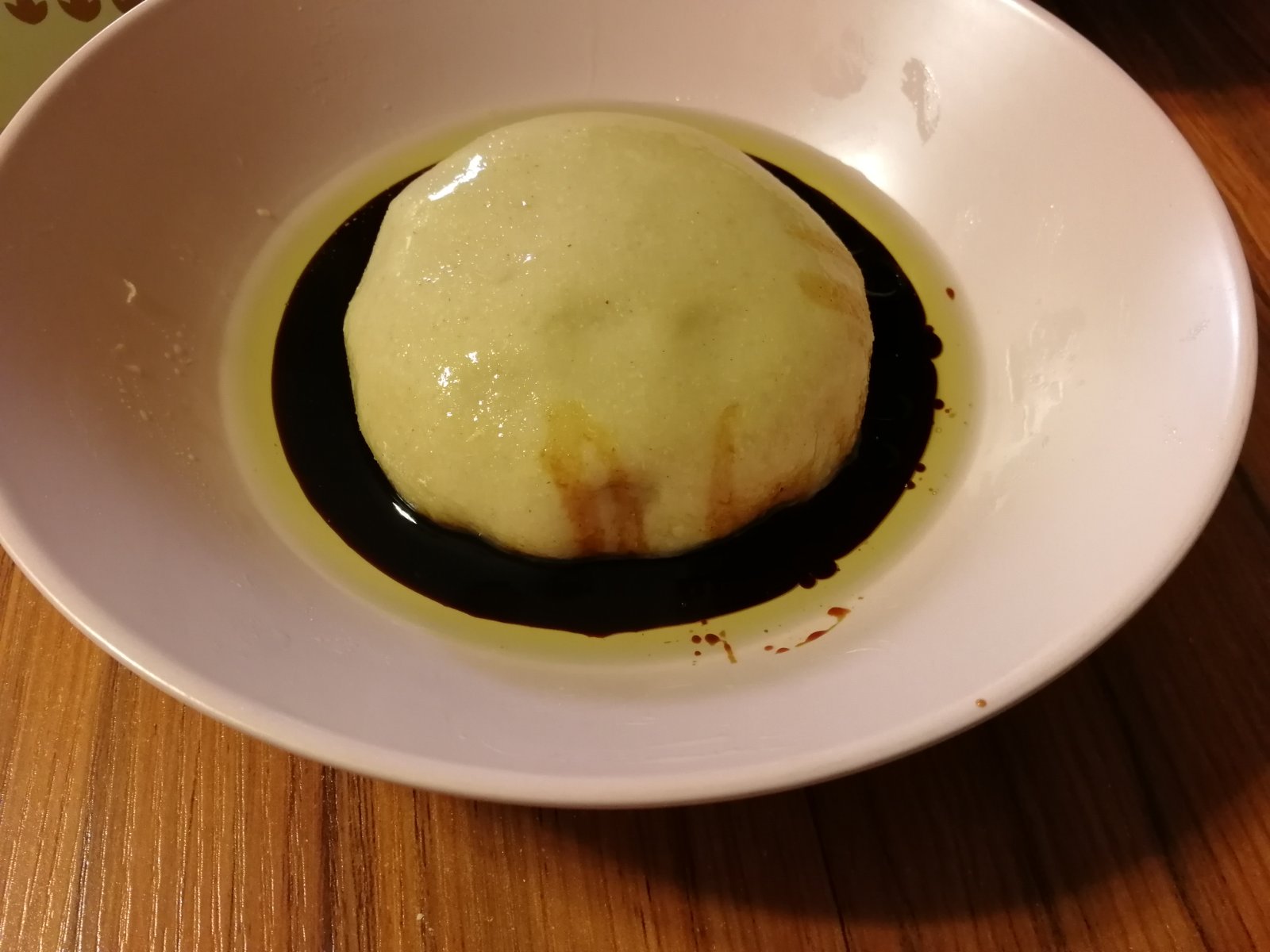Libyan Porridge: ʕASSeedah عَصيدَه Posted by Hanan Ben Nafa on Nov 8, 2021 in Arabic Language, comprehension, Culture, Food, Holidays, Religion, Vocabulary
In this post, you will be introduced to the Libyan version النسخة الليبية of porridge من العصيدة. I decided to dedicate this post to this dessert as the Islamic world celebrated بما أن العالم الإسلامي قد احتفل the birth of the Prophet Muhammad مولد الرسول محمد (صلّى الله عليه وسلّم) (Peace be upon him) a few weeks ago and this is what Libyans often make/eat وهذا ما يطبخه/ يأكله الليبيون غالبًا on that day في هذا اليوم. Below, I will give some information about this traditional dessert الحلوى التقليدية and provides a recipe الطريقة/ الوصفة in Arabic.

Image by Samar (Blogger’s sister).
The ʕASSeedah العَصيدَه is a traditional dessert that is made in many Arab countries, but I’m going to focus today on the libyan version.
What is it?
It’s a dessert that is made of a basic dough (shaped as a flat circle after it’s cooked), and olive oil زيت الزتون and date syrup دِبْس التمر are traditionally poured around it. In Libya, people tend to call it: عصيدة بِالرُّب or “ʕASSeedah bir-rubb“, i.e. ‘Porridge with date syrup’. Some people prefer to put melted butter and honey as an alternative.
= = = = = =
>> At least in Libya, this dessert is usually made on many occasions, such as:
1- The honourable Birth of the Prophet (The Prophet’s Birthday) – (المولد النبوي) المولد النبوي الشريف
2- Baby shower> When female relatives visit a mother who has recently delivered her baby, ʕASSeedah is usually served to the guests. Interestingly, this occasion is called: Es-sbouʕ السّْبُوعْ> , i.e.: the week – to indicate that a week has passed since the delivery of the baby.
3- A Friday يوم جمعة: The ʕASSeedah العَصيدَه can also be eaten as a lovely warm breakfast فطور دافئ ولذيذ on a weekend or any islamic/tradition holiday.
= = = = = =
The Recipe الوَصْفَة:
Let’s now move onto the recipe (watch the video below – in Libyan Arabic).
Ingredients المقادير:
• Four cups of flour ٤ أكواب من الطحين
• Four cups of water ٤ أكواب من الماء
• 1/2 a spoon of salt نصف ملعقة من الملح
• About a large spoon of olive oil حوالي ملعقة كبيرة من زيت الزيتون
*An important tool> a wooden kitchen spatula or ‘El-mughruf’ المُغْرُفْ as it’s called in the Libyan dialect, i.e. ‘the scooper’! However, it doesn’t really scoop but it’s a strong tool to use to knead the dough, which is an absolutely essential part of this recipe. It’s needed for the quiet effortful process of (tough & continuous kneading) التّعصيد (as it’s called in Libyan Arabic), which means the process of kneading the dough, to make it into ʕASSeedah.
= = = = = =
Directions طريقة التّحضير:
1 – Pour the water, then add some oil and a pinch of salt. قم بصبّ الماء،ثم ضِفْ الزيت ورشّة ملح
2- Bring the water to a boil. اترك الماء حتى يغلي
3- Add the flour gradually. ضِفْ الدقيق تدريجيًا
4- Start kneading quickly until the flour is integrated and the water is absorbed (you may need to add water as needed throughout). ابدأ بالعجن بسرعة حتى يمتزج الدقيق والماء وتمتص العجينة الماء (يمكنك إضافة الماء والزيت حسب الحاجة)
5- Now comes the act of kneading, which is the main part.الآن، ننتقل إلى مرحلة العجن/ التعصيد وهي أهم جزء في العملية.
Make sure the bowl doesn’t move while kneading for the best results. تأكد من أن الصحن لا يتحرك للحصول على أفضل نتائج.
6- Make sure there are no lumps تأكد من عدم أي وجود تكتلات/ كرات دقيق في العجينة.
7- Knead again until the dough is soft (off the stove).قم بالعجن ثانية حتى تصبح العجينة رطبة وناعمة
8- Shape the dough into a circle and put it in a bowl that is covered in oil/butter from the inside. شكّل العجينة على هيئة دائرة وضَعْها في صحن مغطّي بالزيت أو الزبدة من الداخل
9- Finally, pour the date syrup around the circle in the bowl. وأخيرا، نقوم بصبّ دبس التمر حول العجينة في الصحن
= = = = = =
Another recipe (in English):

Build vocabulary, practice pronunciation, and more with Transparent Language Online. Available anytime, anywhere, on any device.



